Exotic Blossom Parade
What might interest the folks who visit here regularly? Hmmm?
I know. I have tons of those tropical flowers that are used to promote Hawaii as a tourist destination growing like weeds in my garden. Through relentless promotion these exotic tropical flowers have come to mean Hawaii. Very few are native to these islands. Hibiscus is one native exception. I never really grew them because they were too mundane. Now they are besieged by so many pests the struggle to keep them alive has become a burden.
Most of these "Hawaiian" flowers are immigrants from other tropical lands. Like all the different cultures that have blended here to make this place unique, the tropical flora was absorbed into the mix.
These aren't the slick promotional shots of gorgeous flowers you may be used to. This is the real deal in their native habitat. This is also me being too lazy to set up that perfect shot and doing the best I can with the camera I have. You might also note that too much computer time can hinder a manicured look in the garden.
A five minute stroll through the garden this morning to give you a small sample of the Jungly Abundance.
You may click on any image for an expanded view.
Your standard Bird of Paradise, Strelitzia reginae.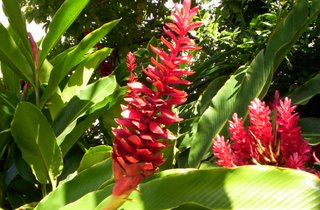
Your standard Red Ginger, Alpinia purpurata. Left to their own devices they continue to grow far past a florists standards and make plantlets on the flowers whose sheer weight brings them into contact with the ground.
Torch Ginger, Etlingera elatior as it winds down from its peak summer blooming time. These flowers are a favorite perch for the many lizards who patrol the grounds.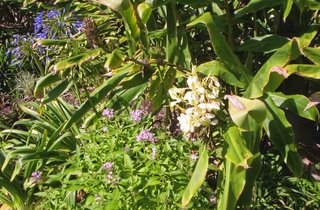
The highly fragrant yellow Butterfly Ginger, Hedychium flavum with Pentas and Agapanthus at its feet.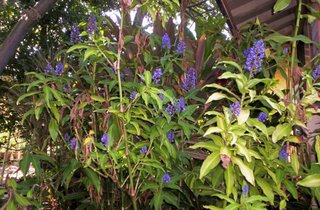
Blue Ginger, Dichorisandra thyrsiflora which is really a shrubby Wandering Jew.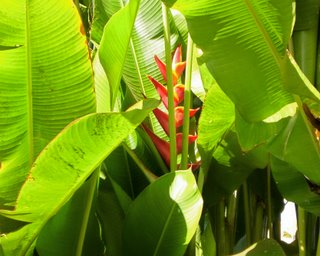
A Heliconia that I am unsure of the species on. It looks to have some parentage with H. caribaea.
Heliconia collinsiana, the hanging varieties really take exotic to a new level.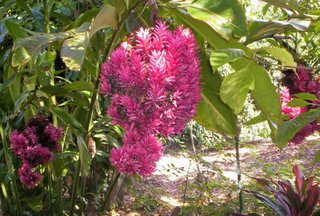
This monster is a cultivar of the common Red Ginger called Tahitian Ginger. When they are happy plants in the tropics are much much bigger in real life than how they appear in catalogues and tourist brochures. Objects will be larger in their natural habitat.
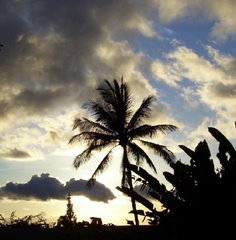

3 comments:
I'm getting all mushy and sentimental already -- and you haven't even moved yet. I'm just so used to you being in Maui, growing all those exotic giant flowers and plants. I'm also stuck on this blog's title, which won't apply in North Carolina. Sigh.
Maybe someday I'll get the chance to go to Maui, to see what you are seeing -- even though you won't be there any more. Sort of like when my brother decided out of the blue to take off to Key West, so he could see what Ernest Hemingway saw. Hopefully by the time I get there, it won't have changed too much from the way it is now.
Christopher,
In the back yard of a house diagonally across the street from where I live, are rows of flowers very much like the ones in that bottom photograph. The house is on the corner of a side street, which is why their back yard is so easily visible. Since it's night time right now, I can't tell for sure, but if memory (since late this morning) serves me correctly, their flowers are only a slightly different color from the ones in your photograph.
Could their flowers here in Zone 5-b (fairly close to Zone 6-a), possibly be the same variety as yours in Zone 11?
I also wanted to ask you if you are a member of this Pacific Bulb Society.
It is possible for someone in Massachusetts to grow Ginger, but they would have to grow them in a greenhouse in the winter. They would not get large enough in one season to bloom there. If these rows of flowers are in the ground and look a bit like the Tahitian Ginger I would guess them to be Celosia a common annual bedding plant.
No I am not a member of the Pacific Bulb Society.
Post a Comment